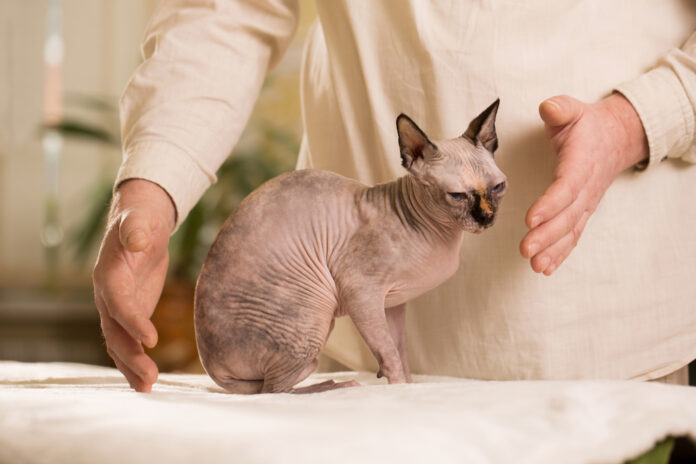Solutions to Frequent Cat Ear Infection Issues

A cat ear infection is one of the most commonly diagnosed cat issues at veterinary clinics.
Given that cats are such stoic creatures, however, an infection often becomes advanced before you even really notice it. As a result, serious health issues – including hearing loss – may ensue. All this to say, it’s important to recognize the signs of an ear infection in your cat and know what to do and how to treat them.
Recognize the signs of an ear infection in your cat
Some obvious signs of cat ear infections? Your cat’s ears are itchy, she’s endlessly scratching, and her ears may even stink.
Other signs may include:
- Discharge
- Redness
- Pain
- Heat
Left untreated, cat ear infections won’t go away on their own. If you suspect your cat is suffering from one, it’s time to see your veterinarian – only they can determine the cause and treat that rather than the symptoms. As for the symptoms, Banixx Pet Care Spray can help with those, bringing safe, effective, speedy relief to your cat’s itching and scratching.
Common causes of cat ear infections
Yeast and bacterial issues
Many cats’ ear infections are due to a yeast/fungal issue or a bacterial issue.
Yeast and bacteria love to grow in the moist environment found in the deep, dark crevice of a cat’s ear. Moreover, dirt accumulates easily in a cat’s ear adding fuel to the fire. Banixx multi-purpose pet spray can be used both as an antifungal or antibacterial solution for this, offering a safe topical remedy which works superbly in conjunction with any prescription.
Ear mites
More often seen in kittens and outdoor cats, and hidden from the naked eye, ear mites are microscopic pests which are only easy for your vet to diagnose. A simple prescription will quickly clear up the problem. But tiny ear mites produce a mighty itch. Your kitty scratches feverishly to relieve the itch which leads to open sores. Here’s where Banixx comes in as a gentle, effective, topical home remedy. While it is not an insecticide and won’t kill the mites – only the vet’s prescription can do that – Banixx will clear up any nasty injuries or sores caused by your cat’s nonstop scratching.
Other causes of feline ear infections
There could also be an underlying condition for your cat’s ear infections, such as:
- Allergies
- Tumors/polyps or a ruptured eardrum
- Foreign bodies, wax buildup, or thick hair
- Autoimmune diseases, immune suppressing diseases (FIV, feline leukemia)
- Diabetes
- Improper ear cleaning
Speak to your vet about your cat’s situation to make sure you can find the underlying cause of recurring ear infections.
Prevention is better than cure
To prevent your cat’s recurring ear infections, it helps to perform regular, preventative visual checks. Your cat’s ears should:
- Be pink,
- Cool to the touch, and
- Have no odor.
There are also a couple of key ways you can prevent painful, itchy ear infections in your cat.
- Make sure you are feeding them a high-quality balanced diet to promote overall health.
- Keep your cat’s ears clean with regular hygiene and maintenance. And how, exactly are you meant to do that, given cats’ notorious dislike of water, and being contained? Just take some gauze or a cotton swab (never a Q-tip!), wet it with Banixx Pet Care Spray and gently wipe the inside of your cat’s ears. Once you’ve done it a few times you might even find your cat loves it, plus you can rest easy knowing you are keeping your feline companion comfortable and happy.
With this multi-pronged approach to your cat’s ear health, you can give your furry feline friend permanent relief from frustrating, uncomfortable ear infections.





